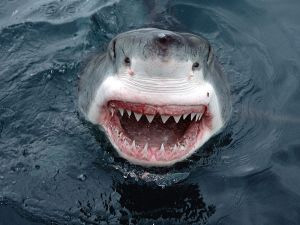
|
 |
 |
 Travel & Outdoors | March 2008 Travel & Outdoors | March 2008  
44 Days of Freedom Took a Young Great White Shark South of Baja
 Dee Chisamera - eFluxMedia Dee Chisamera - eFluxMedia
go to original


| | The great white shark got accidentally caught by a fisherman and was taken afterwards into custody by the aquarium, where it spent a total of 162 days before being released. | | |
One month and a half after the Monterey Bay Aquarium released a young specimen of great white shark into the ocean, they reported its current location south of Baja, and said it is now heading towards waters off the Mexican coast.

The thing that took them by surprise was the fact that the male shark managed to travel an impressive distance in the 44 days since it’s been released into the ocean. The shark’s journey has been tracked ever since its release with the help of a Smart Position-Only Tag (SPOT) that send information on its location, while a pop-up tag sent information on the water temperature and depths the shark prefers.

The great white shark got accidentally caught by a fisherman and was taken afterwards into custody by the aquarium, where it spent a total of 162 days before being released. It is the third time the aquarium releases a shark back into the ocean since 2004, but in this case in particular, the shark was the fastest to travel such long distances.

“It’s remarkable,” said Randy Hamilton, vice president of husbandry for the Monterey Bay Aquarium. “The shark made it to Cabo in one-third the time it took the second animal to get there. To travel that far, that fast was totally unexpected. It’s another reminder of just how little we know about what these animals do in the wild.”

The pop-up tag will continue to send information three more months from now, until it was programmed to pop free (July 2), while SPOT will continue its monitoring months after that.

“Where will this shark end up?” Hamilton continued. “Will it turn north into the Gulf of California? It’s anybody’s guess. What we’re learning adds tremendously to what little is known about the lives of young white sharks.” | 
 | |
 |



